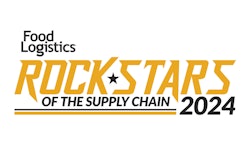
Environmental, social, and governance (ESG) standards influence how investors and leaders evaluate business performance and predict long-term success in a variety of industries, including food manufacturing. According to Industrial Info Resources, food and beverage manufacturers invested nearly $9.5 billion to support over 1,400 ESG-related projects in 2022.
Middle-market food manufacturers may not have access to the same pool of resources as large multinational companies, but they can still support ESG-friendly practices by investing in operational and technology modernization initiatives that also further ESG objectives.
Why ESG initiatives are gaining traction in food manufacturing
The global food and beverage industry has exposure to numerous environmental and social risks. New compliance requirements and stakeholder pressures are driving food manufacturers to assess and manage ESG impact in their operations and value chains.
Regulatory pressures include the proposed climate disclosure requirements from the SEC and the recently approved climate reporting laws in the state of California, where the food and beverage industry has an outsized presence. The Uyghur Forced Labor Prevention Act, which necessitates stricter operational and reporting requirements for businesses sourcing from China, is also a key consideration for manufacturers.
Consumers and individual investors have also made it clear that they prioritize ESG-friendly practices when selecting their favorite food and beverage brands. For example, consumers are increasingly demanding a higher degree of transparency regarding how their food is sourced. Brands have responded by sharing more about where and how foods like beef, poultry, fish, and produce are raised or grown.
3 innovations transforming middle-market food manufacturing
Middle-market food manufacturers have an opportunity to embrace innovations that can drive business growth and profitability while unlocking ESG benefits. Here are three technology-enabled innovations on the rise in food manufacturing:
1. Supply chain localization leads to carbon reduction and faster delivery times
Manufacturers can localize their supply chains to reduce transportation costs, meet new customer demands, and take advantage of tax credits and incentives offered by state and local governments. Depending on the manufacturer, localization can mean onshoring operations from abroad to the United States, shifting from national to regional warehousing and distribution footprints, locally sourcing materials and ingredients, or a combination of these approaches.
Geographically consolidated supply chains can help companies reduce their environmental impact, carry leaner inventories, and reduce costs. For example, by shortening the distances they must transport goods, companies can reduce fuel consumption and pollution from flying, shipping, and driving goods long distances. By lowering the amount of time inventory needs to be held, companies can reduce carrying costs related to refrigeration and fuel. Shorter delivery distances can also make it easier to switch to electric vehicles — especially for last-mile delivery — since electric vehicle charging can still be challenging for long-haul delivery fleets. Localized food supply chains can create more diverse local food systems, support more sustainable agricultural practices, and enable food manufacturers to expand product lines to include more local and seasonally available ingredients.
Companies considering localizing their supply chains may benefit from tax credits and incentives related to upgrading existing facilities, relocating, building new facilities, and hiring. This presents an opportunity to create value for the business while also stimulating local economic activity. Depending on the location, companies may also benefit from green tax credits, which can incentivize renewable energy and water conservation.
Relocating the supply chain is a big endeavor. Companies planning to expand, relocate, or open new facilities should consider location, labor availability, and available tax credits and incentives when planning site selection. Companies must also be sure they have full visibility into their value chain operations so they can develop a strategy for finding new suppliers and, vendors, and for planning new logistical routes.
2. Automation improves productivity and worker safety
The structured, repetitive nature of many manufacturing tasks makes those tasks well-suited for automation. In the food manufacturing industry, where workers need to handle heavy machinery and may be exposed to dangerous chemicals, manufacturers are embracing automation to increase worker safety.
Dangerous food manufacturing tasks like slicing, cutting, boiling, peeling, and picking food are common candidates for automation. For example, harvesting robots can use sensors to determine when produce is ready to be picked and can use robotic arms to gather out-of-reach produce. Sensors can also measure sugar content, check chemical levels, and help make sure that foods are disease-free. Machine vision, another automation technology, can improve the accuracy, consistency, speed, and quality of food and beverage inspection by checking for foreign material, mold, or damage to products before they go into packaging. Robots and machines also reduce contamination risk during production.
Food manufacturers considering automation of their operations should determine the relevant use cases and develop a plan to launch and scale solutions over time. Process optimization, worker buy-in, and proper safety training are essential to seeing the benefits of automation. Manufacturers should invest in the infrastructure, training, and ongoing education necessary to deploy automation safely in human environments.
3. Blockchain unlocks food traceability to prevent contamination, mishaps and waste
Now more than ever, food manufacturers need to be sure they can trace their products through the entire supply chain, all the way back to the source. Blockchain technology can help manufacturers improve supply chain transparency by making sure they source from high-quality suppliers that meet regulatory and consumer standards for fair labor and sustainable agricultural practices.
When leveraged alongside other technologies, a blockchain allows manufacturers to track food products and collect, analyze, and store tremendous amounts of data on their journey through the supply chain. Blockchain technology also grants a higher degree of transparency for the consumer. For example, companies can include QR codes on packaging that allow consumers to see information about sourcing and product history. This high level of traceability can also be used to detect and mitigate product defects or contamination more quickly and efficiently, reducing food waste, cutting costs and curbing potential reputational issues.
Companies interested in adopting blockchain technology for food traceability should first identify which enterprise and ESG goals they want to achieve. Companies can then define the scope of the initial rollout and plan to test and scale the technology throughout the value chain over time. For example, if a business is concerned about preventing contaminated produce from making it onto retail shelves, it might first consider implementing blockchain-powered food traceability processes for produce. Once the business has established the technology, data governance, supplier buy-in, and reporting processes in that area of the business, it can scale those processes to other products over time.
Predictions for the future of ESG strategy in food manufacturing
Food manufacturers can expect ESG strategies to become increasingly important to overall business strategy in the future, as lawmakers, consumers and investors continue to embrace companies that have ESG-friendly practices.
Companies interested in adopting sustainable practices must begin with a careful evaluation of a company’s greatest business risks and opportunities. Companies that lack the resources to do this internally can work with a management consultant to get a holistic view of potential opportunities and navigate viable solutions.
The future of food manufacturing is transparent, tech enabled, and aligned with positive ESG outcomes. Fortunately, technologies that support ESG principles and operational performance are evolving to become more effective and affordable every day, enabling food manufacturers to reap the benefits.















